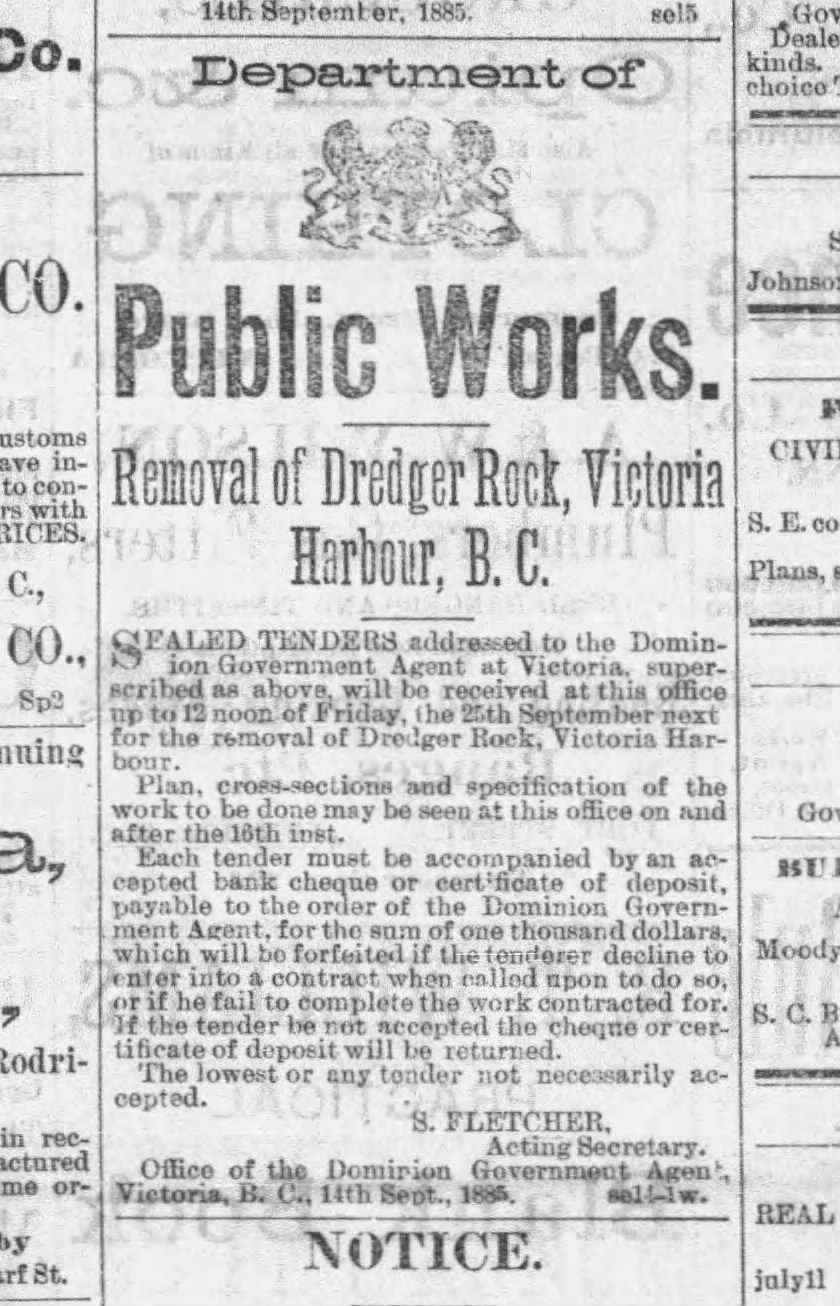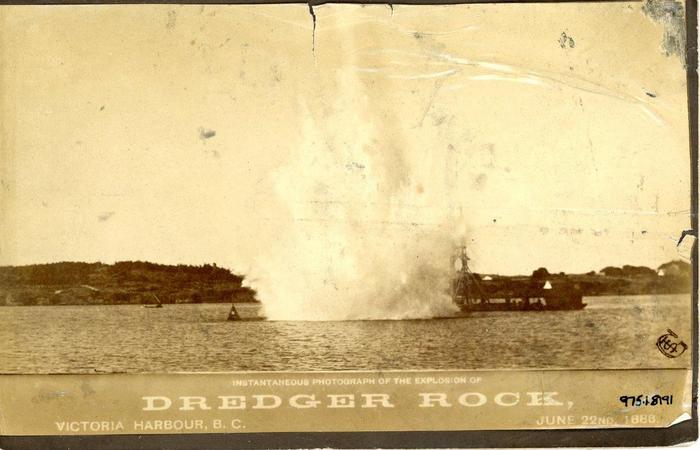Big Rock Go Boom
On Vancouver Island, and especially in Greater Victoria, rocks have always been in the way of settler colonial expansion. In the colonial history of this place, rock outcroppings and large boulders were an impediment to agriculture and settlement.
Not much has changed. Take a drive along the highway through the rapidly growing communities of Langford and Colwood – whole hillsides have been blasted away and massive retaining walls erected to level the land for building.

When British Columbia joined Confederation with Canada in 1871, the identification and elimination of rocks was a top priority for the new province. The rocky coast line made shipping treacherous, and the federal government held responsibility for aids to marine navigation, including lighthouses, buoys, and other beacons. Identifying hazards for ships and, where necessary, eliminating them became key to new province’s economic success.
Across the coast, several locations were identified for projects to improve shipping. Canada was slow to take on this work, to the great disappointment of provincial politicians and Boards of Trade. By the late 1880s, however, work was well underway.
When the Governor General visited Victoria in 1885, he let the local Board of Trade know that the Dominion Government placed great importance on the work of aiding safe entrance to the Victoria harbour, as evidenced by a Ottawa’s call for tenders for the elimination of “Dredger Rock.”

Dredger Rock ran down the middle of the main approach into Victoria harbour. As shipping and ship size increased, so too did the dangers of the rock.
The contract for the rock’s removal was awarded to Charles Hayward, coffin maker, undertaker, and later mayor of Victoria.
Working from a scow with a steam donkey engine and other machinery, Hayward and his crew attacked the rock with explosives, culminating in several explosions over May and June 1886.
On 19 May 1886 at around 5:00pm, 200lbs nitroglycerine “...demolished the surveying platform and no doubt did great execution under water. Several hundred spectators congregated on the shore to witness the operation” (Victoria Daily Standard, 20 May 1886).
One month later, people gathered along Wharf Street to watch another explosion at Dredger Rock. The Victoria Daily Times for 24 June 1886 described a “beautiful spectacle”:
“The waters of the harbour were thrown up in the shape of the Prince of Wales’ feathers, the centre plume reaching a height of about 160 feet from the level of the tide and on either side the [c]olumns fell down placidly. Mr. Oregon Hastings secured an excellent photograph of the event.”
Hasting’s photo of the event survives in the collection at Point Ellice House Museum and Gardens. The production of this souvenir photograph speaks to the way that Dredger Rock’s destruction captivated locals.

Although Hayward declared the “last shot” at the rock would be taken in September 1886, the work continued into 1887 and was delayed when the scow and machinery were lost – once due to a storm and the second time due to collision with a ship. Despite multiple explosions and the dredging of exploded material, a sealing vessel became stuck on the rock in May 1887; it was released from its grips with the high tide.
The dredging of Victoria harbour did not end with Hayward’s work. As recently as 2017, the harbour was dredged to address contamination. There were no explosions in 2017, but in June 2025 the blasting of rock in Langford resulted in damage to nearby properties. These flying rocks made the local news, but it was just another day of blowing up the Vancouver Island landscape — no photographers waited patiently to capture the event and market it to onlookers.